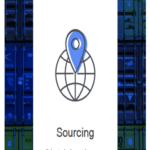What does your business travel itinerary look like over the coming year?
If you’re planning to do much overseas travel, you owe it to your company — and yourself, since you’re ultimately paying the bills — to control your airfare, hotel, car rental, and incidental costs however you can.
You can’t avoid every business travel expense, but well-placed cuts can go a long way. Start with these six easy tips.
1. Travel During the Low Season
Even destinations not known as tourist hotspots have well-defined high and low seasons. In the tropics, these usually coincide with the dry and rainy seasons, respectively; in mid-latitudes, they usually correspond with summer and winter. Hotel and airfare savings can be dramatic during the low season. Just bear in mind that high and low seasons often vary over surprisingly short distances — in Hawaii, for instance, rainfall patterns and thus seasonality change from island to island.
2. Get an Airline Credit Card
Even if you’re not intensely loyal to a particular airline, a top-rated airline credit card can significantly reduce your business travel costs, especially on expensive long-haul flights. The best airline credit cards have valuable fringe benefits too, like complimentary airport lounge memberships and opportunities to enter the upper echelons of loyalty status without flying a gazillion miles or spending a billion dollars.
3. Look for Last-Minute Flight Deals
Don’t leave your hometown without first checking for last-minute flight deals. To fill every available seat, airlines often cut fares dramatically a few days before below-capacity flights, producing deals that seem too good to be true (but aren’t). If you’re nervous about leaving plans up in the air until the last minute, book a refundable itinerary well in advance and cancel when you find a better deal.
4. Stay in Short-Term Rentals
On a per-square-foot basis, short-term rentals are usually cheaper than hotels — especially upmarket resort properties in prime locations. Airbnb has an impressive klatch of services for frequent business travelers, so it’s not like you’ll be totally unsupported out there. Plus, many short-term rentals — apartments, condos, even villas — have kitchen facilities perfectly suitable for at-home meal preparation, a low-cost alternative to spendy dinners out on the town.
5. Use Hidden-City Bookings
Hidden-city bookings are controversial and potentially inconvenient without proper planning. For instance, when you book a “point beyond” itinerary — an itinerary that you have no intention of completing — you can’t check a bag. That’s a big problem on longer trips.
That said, hidden-city bookings often produce dramatic savings, particularly on long-haul flights. Before you book, check platforms like Skiplagged to see how much you can save.
6. Hit Multiple Cities in the Same Trip
If you’re already traveling abroad, why not fill two needs with one deed?
Plan long but efficient trips that hit as many destinations as possible within discrete geographic regions. For instance, if you’re planning a trip to Hong Kong and know you’ll need to be in Shanghai sometime this quarter, visit both on the same trans-Pacific itinerary. Remember, one of the biggest cost drivers of international business travel is the overseas flight — the fewer of those you book, the more you’ll save.
Cheap International Business Travel Is Within Reach
Why stop with these six tips? Seasoned business trippers know that controlling travel costs is a never-ending battle — and that each new trip brings new opportunities to save. You might even say the sky’s the limit.








